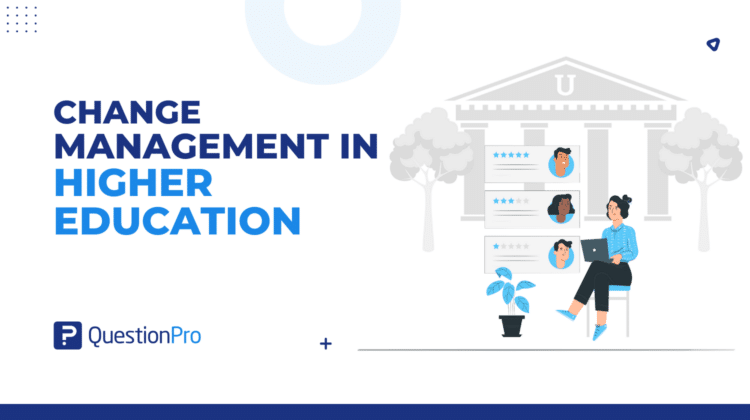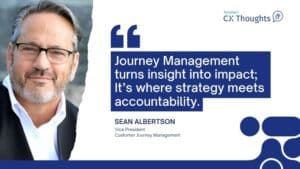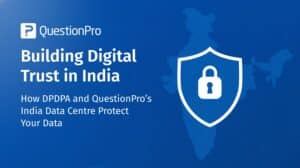
At QuestionPro, we partner closely with higher education institutions navigating digital transformation and strengthening change management in higher education. Across campuses, CIOs and finance leaders are balancing tighter budgets, rising student expectations, and the operational demands of hybrid learning. As institutions re-evaluate their technology ecosystem, one trend is clear: effective change management in higher education is now a strategic requirement, not a supporting function.
Why Change Management in Higher Education Is Driving Technology Reassessment?
Institutions are moving from disconnected legacy systems toward unified platforms that reduce costs, centralize data, and streamline workflows.
Many campuses still rely on outdated and fragmented systems: legacy SIS platforms, manual workflows, multiple survey tools, and siloed research systems. This creates:
- Data fragmentation
- Administrative inefficiency
- Slow decision cycles
- Cost redundancies
Leaders are prioritizing tools that can consolidate key processes such as course evaluations, student experience feedback, and alumni insights into a more unified technology stack.
CIOs and finance teams assess technology across three core lenses:
- Financial sustainability: eliminating tool redundancy and long-term costs
- Operational efficiency: simplifying the work of staff, faculty, and administrators
- Experience improvement: modernizing digital experiences for students, alumni, and researchers
Institutions no longer seek isolated tools, they want platforms capable of supporting their entire campus ecosystem.
How Higher-Ed Leaders Evaluate Technology Spend During Change Management?
Technology investments are now long-term strategic decisions, not short-term software purchases.
- Total Cost of Ownership (TCO): Institutions consider integration complexity, maintenance time, staff hours, and scalability. The focus is shifting from “What does it cost?” to “What does it save?”
- Workflow Simplification: Campuses increasingly prefer unified platforms that streamline course evaluations, student feedback, alumni outreach, and research workflows rather than maintaining multiple tools.
- Data Visibility and Governance: Centralized data supports accreditation, compliance, decision-making, and continuous improvement.
- Vendor Partnership and Support: Higher ed values long-term partners who provide training, onboarding, configuration support, and institutional guidance, not transactional vendors.
Why Strong Change Management in Higher Education Improves ROI?
Technology succeeds when people are guided and supported throughout the transition.
From our experience working with universities, effective change management includes:
- Governance structures that elevate the project campus-wide
- Readiness checks across data, processes, and impacted roles
- Clear communication about timelines, expectations, and benefits
- Role-based training for faculty, staff, and students
- Continuous feedback loops for ongoing optimization
When stakeholders understand the purpose and benefits of change, resistance decreases and adoption rises, directly improving ROI.
A critical part of this process is transitioning away from legacy systems without disrupting academic operations. QuestionPro provides full-service migration support including survey transfer, logic replication, historical data migration, user onboarding, and role-based configuration, ensuring minimal disruption and full data continuity. Our structured 7-week migration framework includes dedicated onboar
What Steps Help Institutions Implement Technology Successfully?
A structured rollout increases adoption, reduces risk, and creates long-lasting transformation.
- Process Review Before Implementation: Modern systems cannot fix outdated processes. Clean workflows create a clean implementation.
- Clear Benefits Map: Students, faculty, researchers, alumni, and staff should all see the value of the change.
- Phased Implementation: Phased rollouts reduce risk, create early wins, and improve stakeholder confidence.
- Dedicated Change Resources: Training support, communications teams, and backfill staffing are essential for campus-wide success.
- Consistent Measurement: Tracking satisfaction, turnaround time, adoption, and time savings maintains momentum.
How QuestionPro Supports Change Management in Higher Education?
QuestionPro acts as a transformation partner, not just a technology provider.
We help institutions modernize feedback, research, and evaluation workflows through a unified platform:
- Students: seamless course evaluations and student experience surveys
- Faculty & Staff: sentiment insights, workload feedback, and employee engagement through Workforce
- Management Teams: dashboards showing readiness, performance, and adoption
- Alumni: modern engagement and donor insights
- Research Departments: compliant, secure tools for academic studies
By combining data migration, workflow replication, onboarding, and campus-wide training, QuestionPro becomes a change management enabler, supporting institutions in their Qualtrics to QuestionPro transition with confidence and clarity. Our structured approach minimizes disruption, protects data integrity, and accelerates adoption.
Universities already benefiting from this approach include the LA Trobe University, University of Bath, Arizona State University, and the UC Irvine, all of them leverage QuestionPro for academic research and institutional planning.
Let’s Explore What Transformation Looks Like for Your Institution
Every institution’s journey toward modernization looks different, but all require strong leadership, clear processes, and a platform capable of supporting change at scale. QuestionPro partners with campuses through unified feedback systems, structured training, and seamless transitions from legacy tools, enabling improved agility and insight across departments. If your institution is exploring upgrades to its digital experience or research systems, we can help you plan a transformation that aligns with your goals.
It is the structured, people-centered process institutions use to transition to modern systems while minimizing disruption.
To reduce redundancy, improve data visibility, simplify workflows, and modernize student and faculty experiences.
Strong governance, readiness assessments, clear communication, training, and continuous improvement.
By providing unified tools for evaluations, student experience, alumni insights, staff feedback, and research, all supported by structured onboarding and seamless migration from legacy platforms.







